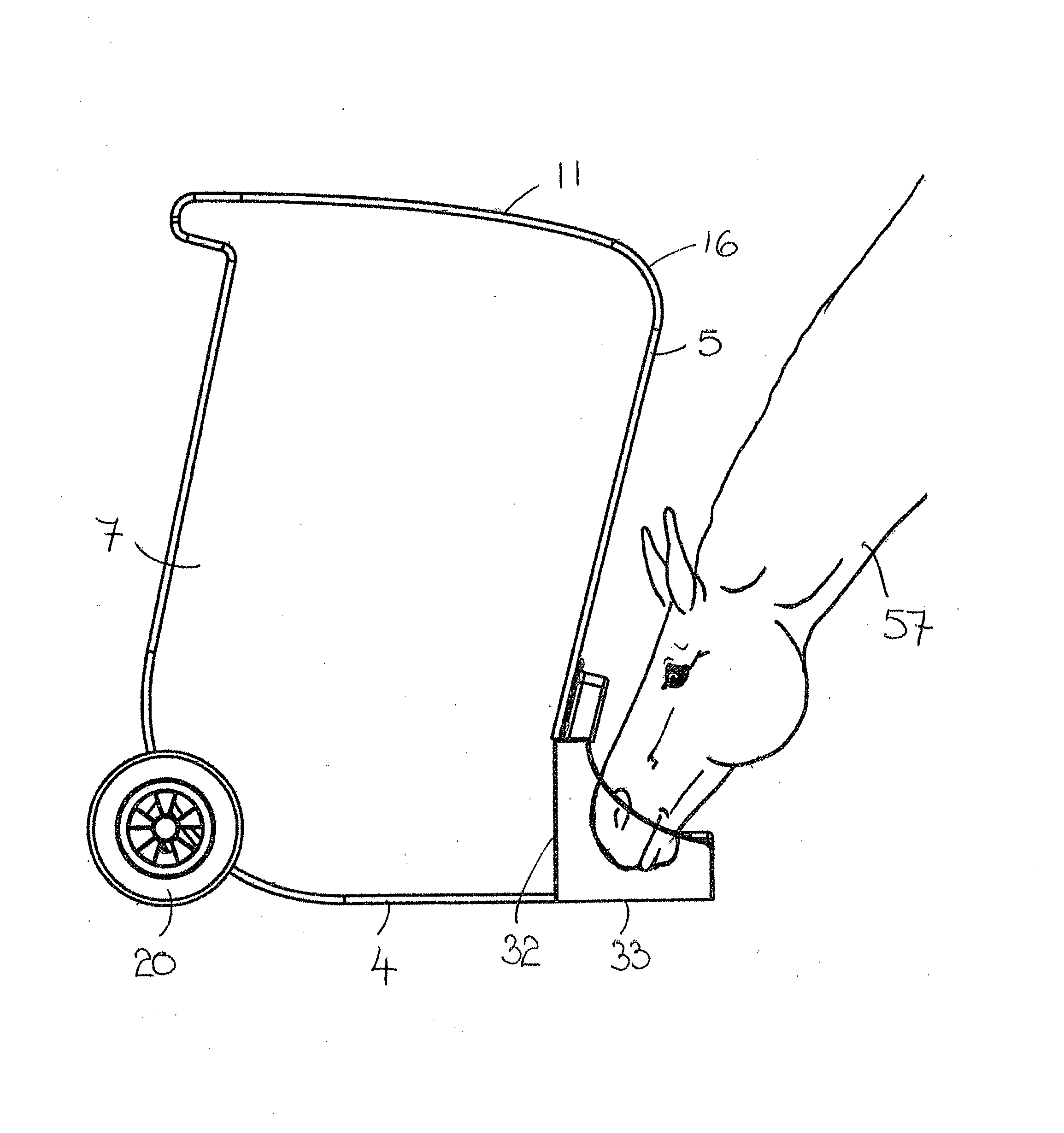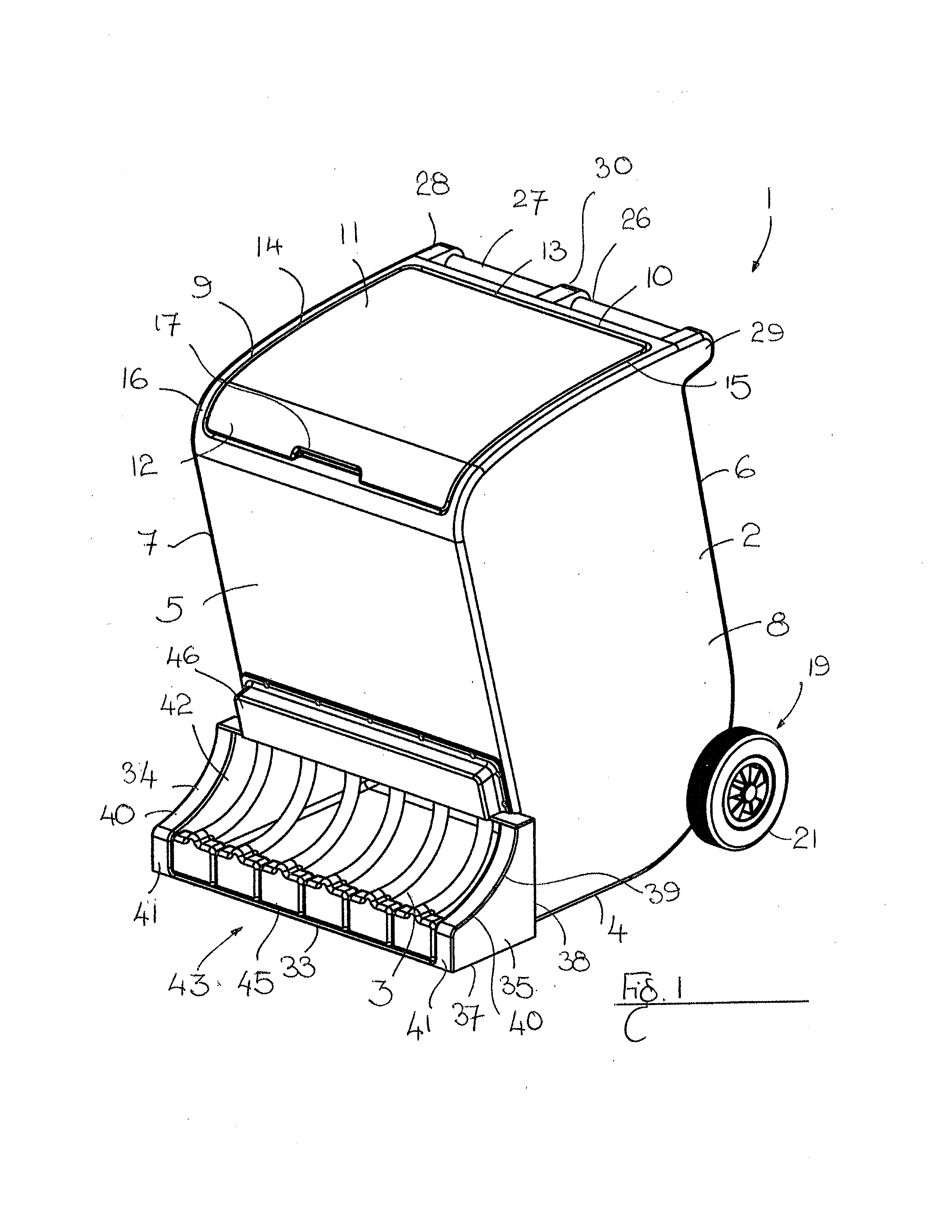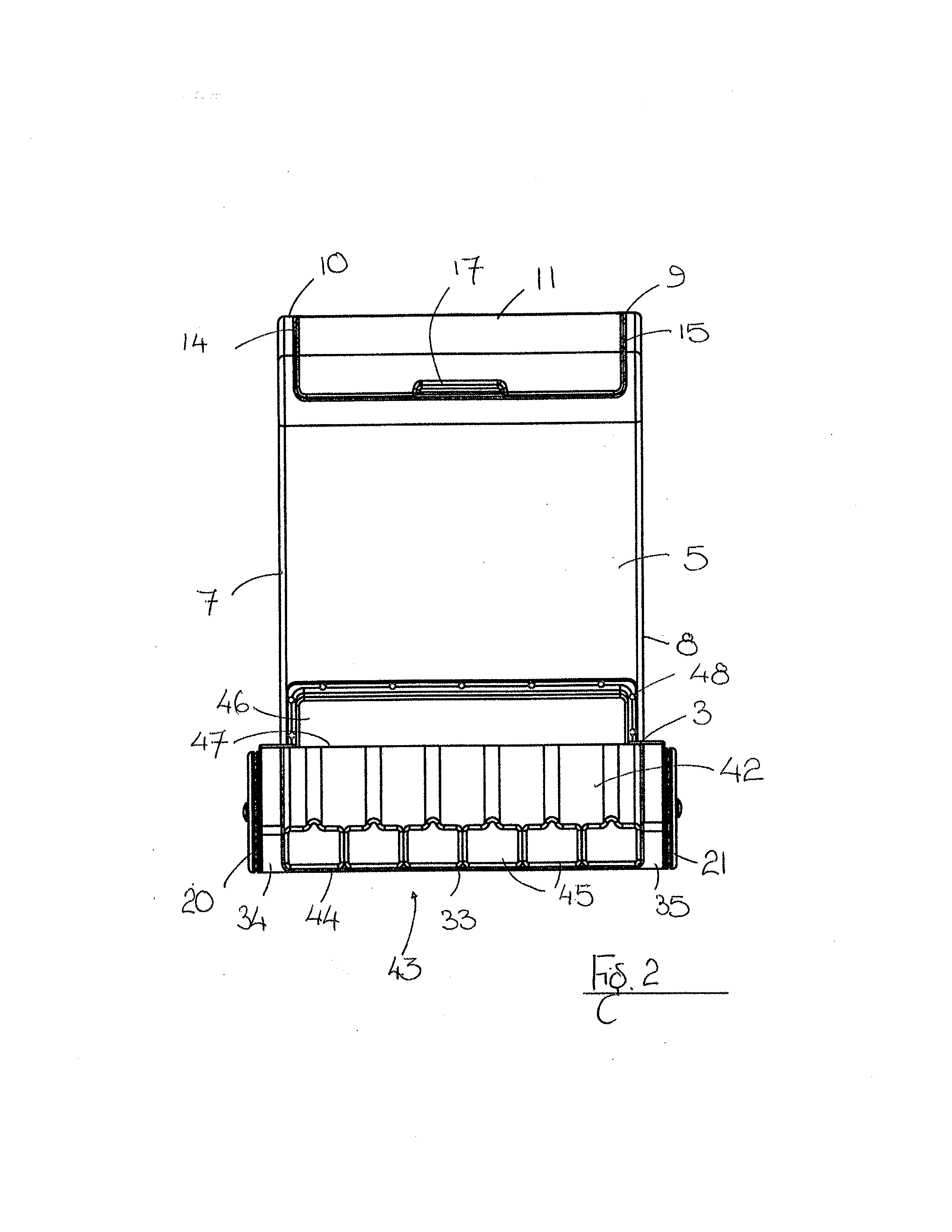Animal feeder
a technology for feeding devices and animals, applied in the field of animals feeding devices, can solve the problems of severe muscular strain on the animal, development of cranial and caudal hooks on the teeth, and above mentioned feeding methods and containers, etc., to achieve the effect of reducing muscle strain in the topline musculature, facilitating normal jaw movement, and reducing the risk of injury
- Summary
- Abstract
- Description
- Claims
- Application Information
AI Technical Summary
Benefits of technology
Problems solved by technology
Method used
Image
Examples
Embodiment Construction
[0051]FIGS. 1 to 5 show an animal feeder 1 in accordance with the invention for grazing / foraging animals adapted, firstly, to anatomically replicate or mimic an animal's natural grazing / foraging position and, secondly, to physiologically replicate an animal's natural grazing / foraging pattern. The animal feeder 1 is suitable for use with a variety of feed / forage types (hereinafter referred to as feed) such as hay, dry feed and the like.
[0052]As shown in the drawings, the animal feeder 1 is made up of an upper feed storage bin or hopper 2 and a lower recessed integral feeding trough 3. The hopper 2 is typically dimensioned to store an animal's daily feed requirement and is formed from a bottom wall 4 having a front wall 5, a rear wall 6, a first side wall 7 and a second side wall 8 upstanding therefrom to define a hopper opening 9. The hopper opening 9 is surrounded by an upper lip 10 on the front wall 5, rear wall 6, first side wall 7 and second side wall 8. The recessed feeding trou...
PUM
 Login to View More
Login to View More Abstract
Description
Claims
Application Information
 Login to View More
Login to View More - R&D Engineer
- R&D Manager
- IP Professional
- Industry Leading Data Capabilities
- Powerful AI technology
- Patent DNA Extraction
Browse by: Latest US Patents, China's latest patents, Technical Efficacy Thesaurus, Application Domain, Technology Topic, Popular Technical Reports.
© 2024 PatSnap. All rights reserved.Legal|Privacy policy|Modern Slavery Act Transparency Statement|Sitemap|About US| Contact US: help@patsnap.com










